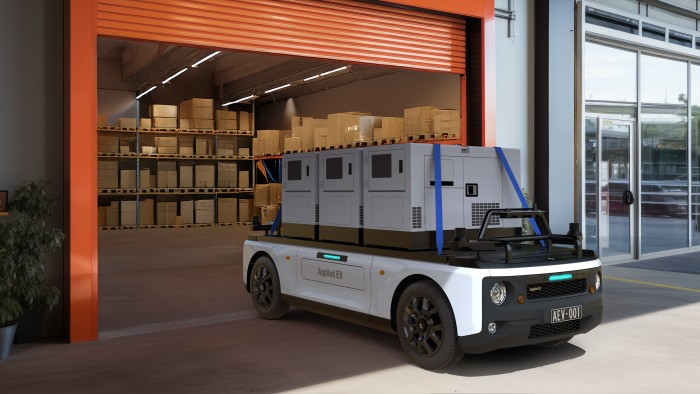Stay informed with free updates
Simply sign up to the Electric vehicles myFT Digest — delivered directly to your inbox.
Australia, the country that invented the “ute” — the inspiration for the pick-up truck — is developing an autonomous version of utility vehicles where mundane driving tasks can be carried out by robots.
Applied EV, an electric-vehicle technology company that emerged from the ashes of a once proud automotive sector, is planning a listing after deepening a partnership with Japan’s Suzuki to make autonomous vehicles designed for “dull and dangerous” jobs.
Ties between Japan’s powerful auto industry and Australia’s niche car tech sector have already been extended this month, with Mitsubishi Electric Mobility investing £26.2mn in London-listed Seeing Machines for a 15 per cent stake. The Canberra-based company has developed a system that monitors the eyes of truck drivers and pilots and Mitsubishi will embed the technology in its own vehicles.
Applied EV was founded in 2015 in a Melbourne garage when the country’s car industry had all but collapsed. Companies including Ford, Toyota and General Motors, which owned the famous Holden brand, closed manufacturing plants after cheap vehicles from countries such as Thailand flooded the market.
Julian Broadbent, a General Motors veteran who co-founded Applied EV, said that played into his young company’s hands as the pool of cheap skills in Australia grew. “We looked out the window and realised we could pick up a lot of talent. Ford, GM, Nissan all left in a hurry,” the chief executive said.
Applied EV, which has developed a “control system” for autonomous vehicles, opted against trying to compete in the crowded market for passenger cars, such as robotaxis, and instead focused on creating a system that could be used for tasks such as retail delivery, mining, warehouse and factory transit and to monitor solar farms.
“Making robot taxis requires huge investment. We found an easier road to market by looking at all the crappy jobs. The dull and dangerous jobs that drivers don’t want to do. The monotonous work,” said Broadbent in a Financial Times interview.
Many countries also face a shortage of drivers so the type of vehicle it has developed with Suzuki will help fill that gap, according to Broadbent. “The public will feel comfortable with this — we’re solving real human problems,” he said of the company’s strategy to spurn the “holy grail” of disrupting the passenger car market in favour of targeting vehicles that would do jobs such as street sweeping, remote site monitoring and garbage removal.
Applied EV has signed deals with companies including Japan’s Teijin and Suzuki. The latter bought a 5 per cent stake in the business in 2022 to use its “Blanc Robot” software to develop different EV models.
Applied EV has also opened an office in Brackley in the UK to pursue deals in Europe and the Middle East and is working with Oxa, the Oxfordshire-based automotive technology company, to create delivery vehicles for grocery logistics company Ocado.
Applied EV is part of an emerging autotech sector in Australia that — as well as UK Aim-listed Seeing Machines — includes ASX-listed Acusensus, whose tech helps roadside safety cameras spot drivers using their phones or not wearing seatbelts. The country is also emerging as a key non-Chinese supplier for the auto sector providing critical components such as graphite and lithium to the EV market.
Australia’s auto innovation dates back to the 1930s when the country produced the first ute, local designers creating a vehicle that could work both in a farming and an urban setting. Henry Ford was said to have described the vehicle as a “kangaroo chaser” as variations of the format spread across the world.
Applied was due to list in 2022, having raised funds at a A$150mn (US$95mn) valuation, but a collapse in investor sentiment during the pandemic forced it to pull those plans.
Broadbent said the company was due to recapitalise in 2025 and a listing was “definitely on our radar”. He said the company, which has funded itself from revenues of about A$30mn a year for the past two years, was in a stronger financial position than when it first planned to float.
Read the full article here

